Introduction
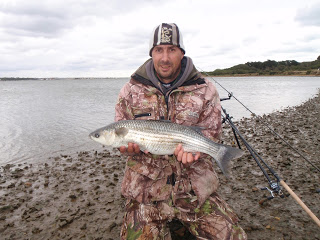 |
| The author with his pb mullet of 7lb 5oz from Christchurch harbour |
My own mullet fishing life started as a kid in the late 1970s growing up next to the River Camel in north Cornwall. Back then the idea that mullet were uncatchable by conventional means was still widely believed, and the local method of choice was to deliberately foul hook them with very heavy gear and strings of large trebles (known now as ‘snagging’ or ‘ripping’). The river was full of mullet that were nearly always visible and many fell victim to this rather barbaric practice. However the local tackle shop owner and rod builder, the late great Keith Appleton, grew fed up with witnessing this and decided to offer annual prizes for mullet caught properly. Armed with this incentive, myself and one or two others set out to learn how to catch them with bait. Our tackle was crude and we were really making it up as we went along, but eventually I started to have some success ended up taking home that trophy four years running! Thus began the obsession that still grips now, over 35 years later.
Since I started mullet fishing all those years ago, perhaps the biggest advancement has been the adoption of coarse fishing methods and tackle. Because the mullet is a ‘sea’ fish I think for a long time there was a tendency to try and catch them on completely unsuitable sea fishing gear, contributing to the ‘uncatchable’ reputation. But the mullet’s diet and feeding habits are much more akin to coarse fish so it stands to reason that a coarse fishing type approach is the way to go. Thick lipped mullet, as the name suggests, have a pronounced thick fleshy upper lip and much harder lower jaw. They feed predominantly by grazing algae and diatoms, or sifting through the sediment in search of invertebrates or other very small food items. The lower jaw is cleft and they often leave tell-tale parallel tracks in the substrate giving away their presence.
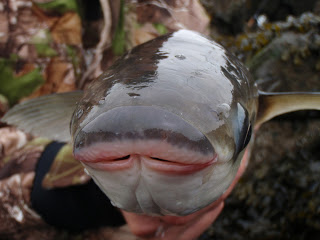 |
| The business end of a 6lb thick lipped mullet |
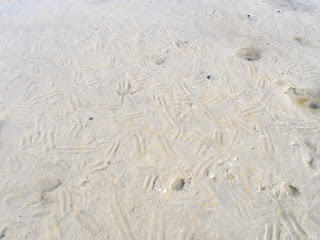 |
| Scrape marks left by feeding mullet |
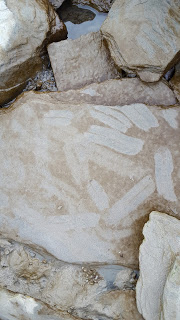 |
| More scrape marks |
As mentioned above, coarse tackle is a must if you want to have a realistic chance of success. I use ‘avon’ style rods because they are versatile and can be used for all of the three methods I employ – float fishing, touch legering and quiver tipping. Others may use either specialist float and leger rods, it is purely personal preference. My rods are all 12ft in length – a lot of the places I fish preclude using anything longer. Once again though other mullet anglers prefer longer rods, often up to 15 or even 17ft in length. Probably more important than length is the action. I use softish rods that bend right through to the butt – my main three are 0.5lb, 1lb and 1.5lb test curves. Mullet are very powerful fish that run long and hard and in my opinion too stiff a rod is asking for hook pulls or breakages.
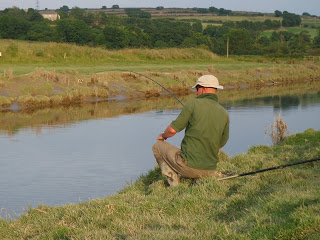 |
| The author with a mullet on |
For mainline I use bog standard 6lb bs mono, usually Daiwa Sensor Black. When mullet fishing your line takes a pounding and I see no need to use anything more expensive. In 2016 I dabbled with braid and had some success with it but will probably stick to mono for most of my fishing for the time being. If I need to use a separate trace or hooklink, 4lb bs fluorocarbon fits the bill.
When it comes to hooks, the barbed vs barbless debate rages among mullet anglers. For me personally 90% of the time I use Kamasan B981 in size 8. This is a standard barbless J pattern and has caught me hundreds, if not thousands, of mullet. For me the advantages of barbless far outweigh any perceived disadvantages. The other 10% of the time I use Kamasan B983s in size 10. This is a wider gape pattern with a whisker barb and can be better for legering.
I use two main types of float – Drennan Loafers from 2SSG up to 5SSG and Drennan Pudddle Chuckers (the slimline unloaded ones) again in various sizes. All of my fishing is done sub-surface so I’m not qualified to comment on controller floats etc for surface fishing! The leads I use are simple bombs in 1/4oz, 3/8oz and 1/2oz sizes plus 1.1oz Korda gripper carp leads. For swimfeeders I use in-line method feeders in 14g and 28g sizes. Other than that, high quality small swivels – barrel, snap and three-way, a selection of split shot and a plummet. More generically, a fish-friendly landing net is a must. Mullet have large scales that detach very easily and must be handled with great care. Good quality polarized sunglasses will also protect your eyes and help immensely with fish spotting!
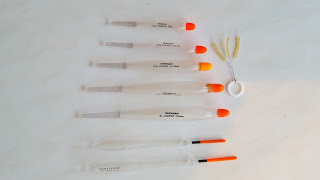 |
| Drennan Loafers and Puddle Chuckers |
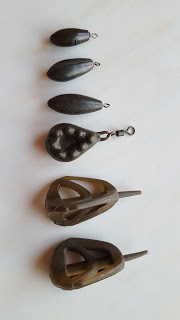 |
| Leads and feeders |
Thick lipped mullet are traditionally thought of as a summer species and indeed for most parts of the UK this holds true. Along the bulk of the south coast the season is nominally May to October or possibly into November if the weather holds. The further north or east you go, the shorter the season. But way out west in Cornwall and also in south west Ireland and the Channel Islands, it is possible to catch mullet throughout the year. I have caught fish in west Cornwall in the depth of winter with sub-zero air temperatures, and all the puddles and the sand on the beach frozen solid. In terms of range, they occur all around the southern part of the UK and up the western side at least as far as the Clyde system in Scotland. How far they range up the east coast of the UK is debateable but probably at least as far as the Scottish border. They are also prevalent all around Ireland during the summer, and indeed southern and south west Ireland offers some of the finest mullet fishing to be found anywhere.
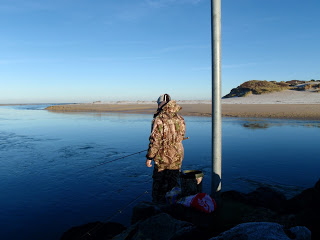 |
| Even the sand was frozen! |
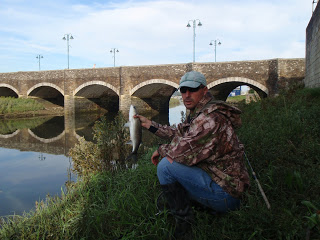 |
| Mullet likes structures! |
In part 2, Pete takes us through the methods he uses.

Just read your article. Good one. I liked it. Keep going. you are a best writer your site is very useful and informative thanks for sharing! Go for the best quality product possible and research before purchasing one. Wasting money is not something anyone likes, better spend sometimes on research and get the right best fishing reel.